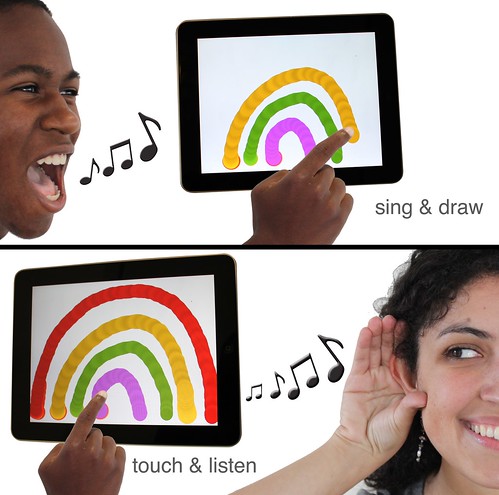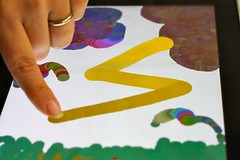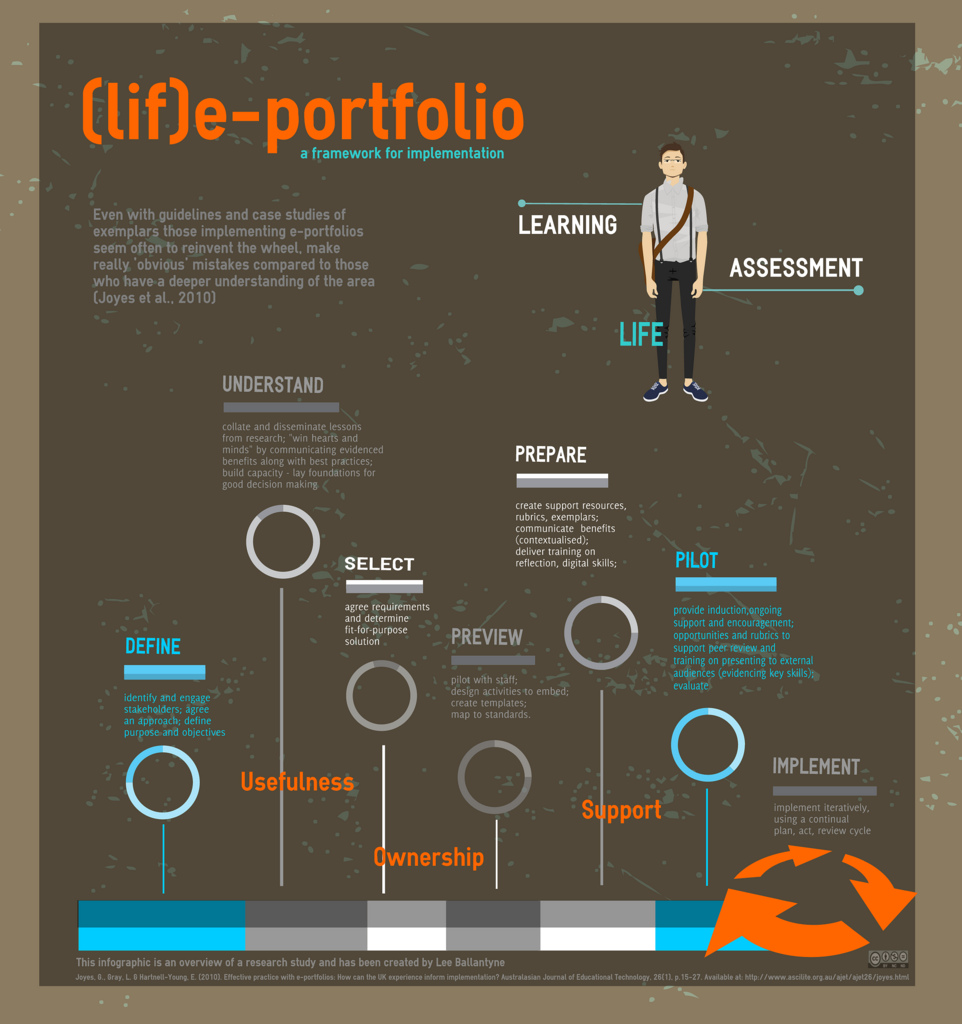Linda Castaneda emailed me. “As I have already told you, Jordi Adell and myself, are editing a book about PLEs in Spanish. It is not a commercial book, we are going to edit some hard copies for free and an open ebook in the Web. The idea is to offer an overview of PLE for teachers (as complete as possible), in plain, trying to explain what PLE means in general but, specially, what PLEs mean for formal education.
The idea is how understand better PLE and how PLE could transform education and the teachers practice…. in order to give a wider perspective, we would love to include a kind of “chapter of basics around the world” which include some “basic” texts (preferible blogposts), regarding some topics around pedagogical things around PLEs and emergent pedagogies from international relevant authors, even if those texts has been already published in English…
We think sometimes our teachers don’t have access to those texts because of the language, or because of the format (from our experience, school teachers are not usual blogsphere readers), or because of the context (they don’t understand how include those texts ¡n their day to day needs. So we want to include some texts like this, translated into Spanish in order to complete the PLE perspective we want to offer.
The question is we would love to include one of your texts (blogposts) on it. Something already published in a non problematic format (no journal papers for Copy Right problems) that could give some light on the PLEs topic or better, on the Pedagogies around PLEs. In your case the “link with all the informal part would be great and crucial).”
And she offered me a beer and a good meal. How could I resist? I couldn’t find anything suitable that I had already written so I wrote this short text on Sunday.
PLEs and Hype cycles
Gartner has used hype cycles to characterize the over-enthusiasm or “hype” and subsequent disappointment that typically happens with the introduction of new technologies. Hype cycles apply as much to educational technologies as they do to consumer products.
Yet the discussion and development of Personal Learning environments does not follow the normal hype cycle pattern. Although the idea has been in widespread use since 2004, there is a steady increase in research and development and in initiatives to implement PLEs in practice.
Perhaps this is because although the idea of PLEs can lead to the development of new technology applications, it is predominantly an approach to using technology for teaching and learning, rather than an educational technology per se. As such the developments of PLEs interact with both wider societal discussions around the future and purpose of education and with different pedagogical initiatives around Technology Enhanced Learning. This short article will look at these interactions.
The purpose and future of education
The debate over the purpose and future of education has spread beyond the educational community to enter mainstream political and social discourses. In part this is a product of the economic crisis and pressure for fiscal savings by national governments. It is also due to attempts by capitalism to open new markets through commodification and marketisation. This in turn has led to both movements to defend state funded education and to open access to learning. At a more fundamental level, the debate may reflect the growing dysfunctionality of education systems which were developed to meet the needs of an earlier form of industrial capitalism and no longer meet the perceived needs of late capitalism. And whilst in the past education systems, curricula and pedagogy were able to balance the needs of industry with the ideas and aspirations of educators, there is a growing tension as to the very purpose of education today.
Interestingly, Personal Learning Environments offer something to all sides in this debate. On the one hand they offer a tool to recognise learning from all contexts and to allow new and open approaches to pedagogy to develop the potential of every learner. On the other hand they can be used for lifelong and continuing learning to develop and improve employability, regardless of institutional arrangements.
Technology and learning
Of course, the rapid development and implementation of new technologies is impacting on education, as it is on all other sectors of society. Technology Enhanced Learning is not a new phenomenon. Both radio and television were extensively used for learning and web 1.0 offered widespread access to information. But these were essentially push technologies. Web 2.0 has opened up discourse and interactivity further blurring the roles of teacher and learner. At the same time improved bandwidth has facilitated the production and sharing of multimedia challenging the primacy of print as a paradigm of education. Near ubiquitous access to the internet and the development of mobile devices means learning can take place almost anywhere. And social software has allowed the development of dispersed personal networks outside the school and the creative application of technology for learning in the classroom.
Research and development of PLEs
Given such developments, PLE research could almost be seen as a description and analysis of how people are using technology for learning, rather than as an idea as to how they might. Of course many young people use their personal networks on facebook to discuss their homework. Wikipedia is an increasingly universal reference point for information and knowledge and thousands of teachers, amongst other, contribute to it. And when we want to find out how to do something we often turn to crowdsourced video sites.
However PLE thinking goes further than this. The PLE movement is not based on a single artefact or thing or a simple pedagogic approach but represents diverse ways and perspectives on how we can change process and form of education and in particular as to how we can facilitate learning in multiple contexts.
As such the development of PLEs interacts with many different experiments, projects and initiatives with using technology for teaching and learning.
These include:
The design of new schools and learning spaces
The Telefonplan School, in Stockholm has been designed so children could work independently in opened-spaces while lounging, or go to “the village” to work on group-projects.Such open environments facilitate flexible learning and personal learning pathways. Other spaces such as libraries, museums and cultural centres are increasingly seen as learning environments.
Massive Open Online Courses (MOOCs)
The fast growth in provision of Massive (and not so massive) Open Online Courses has been enabled by the use of Personal Learning Environments and even if some of the more institutionally driven MOOCs are quite traditional in form it is likely that students are using their online personal networks as a support for learning
Learning analytics
Although in its infancy, learning analytics could pathways for navigating and structuring learning through a Personal Learning Environment
The recognition of informal learning
The spread of Personal Learning Environments is leading to new initiatives to recognise informal learning and learning in different contexts. Such initiatives include the Mozilla Foundation’s Open Badges project
New Standards
The ADL sponsored Experience API is designed to allow learners to track and record their personal learning.
The use of social software and multimedia in the classroom
Teachers are increasingly bypassing the restrictions of Virtual Learning Environments to integrate social software and multimedia for creative and explorative learning in the classroom (see for example the work of the EU funded Taccle 2 project).
Shaping our Learning
Marshall McLuhan said “we shape our tools and then our tools shape us.” As a community we need to consciously shape our tools for learning, just as those tools shape the forms and learning which plays such a key role in our personal lives and in our society.
And of course the shape of those tools will inform the future design of our educational institutions and schools. PLEs are not just a tool but are an approach to how we develop and shape those tools.
This in turn will increasingly impact on the role of teachers as supporters and facilitators of learning. PLEs, along with other developments represent a move towards learners taking more responsibility for their learning. However for this to happen they will need support. It also raises the issue of what literacies learners need not just to access and evaluate information but to themselves shape their tools.
At the same time, the contexts in which we are learning are widening. Whilst we are developing an understanding of context in terms of location, through the use of mobile devices, we have still to fully understand different aspects of context including, perhaps critically, what we are trying to learn.
The debate over the role of educational institutions will continue. Our increasing understanding of the role of PLEs in learning can contribute to this debate. PLEs do not invalidate or diminish the role of institutions but can inform how we view institutionally based learning within wider communities, be they online or geographically based. PLEs may also help to overcome some of the tensions between the different purposes and directions for education in the coming years.








